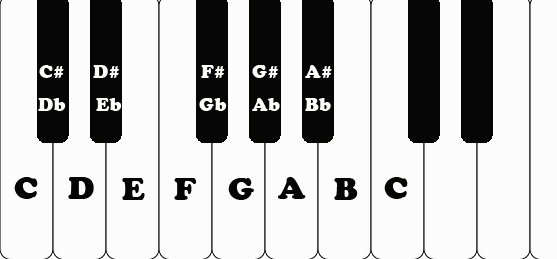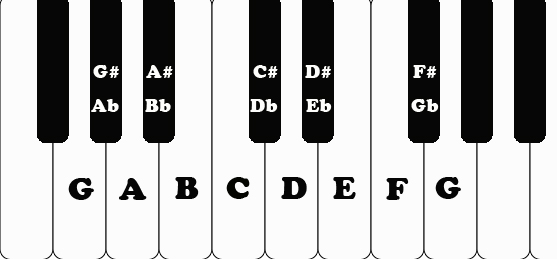Tones and semitones
A scale is a series of notes played in a sequence. The sequence usually consists of a particular order of tones or semitones or sometimes larger intervals.
On a piano, a semitone is sounded when notes that are side by side are played.

B followed by the C next to it. (notes next door)
On a guitar, a semitone is sounded when notes are played on frets no the same string that are side by side.
e.g. 1st fret on the 1st string (E) followed by the 2nd fret on the 1st string (F)
A tone is sounded on a piano when notes are played that are separated by another note.

C followed by D – there is a black note in between
On a guitar, a tone is sounded when notes are played on frets on the same string that have a fret in between.
e.g. 1st fret on the 1st string followed by the 3rd fret on the 1st string
The major scale
The major scale is a sequence of tones and semitones that contain the notes for a major sounding key. The sequence is created by playing notes using the following order of tones and semitones.
Tone Tone Semitone Tone Tone Tone Semitone
So if C was the starting note, this sequence would create a C major scale using the following notes:

In C major, all the white notes on the piano are played. No black notes, or sharpened or flattened notes are used. C major is the only key that has no sharps or flats.
But when a major scale starts on a different note to C, it will require some notes to be sharpened or flattened (raised or lowered).
Starting on a G will require the F note to be sharpened to maintain the sequence of tones and semitones. So a song in the key of G major will use F# instead of F to give the G major tonality.

